Polarity analysis (PA) is a development of Boenninghausen’s concept of contraindications. It serves to determine in individual disease a healing probability for each homeopathic medicine in question. The method leads to an efficient and reproducible choice of remedy and increases the precision of prescriptions as compared to a conventional homeopathic procedure (figure 1) Polarity analysis is based on the revised edition of Boenninghausen’s Therapeutic Pocketbook, an exceedingly reliable repertory. Polarity analysis is generally practiced with computer software.
Figure 1: Treatment course over 1 year with polarity analysis vs conventional homeopathy(50 patients with three or more diseases were homeopathically treated over 12 months using polarity analysis. 86% of them achieve an improvement (based on their personal rating) of at least 80% or more – the average improvement is 91%. In the reference group with one single disease treated by conventional homeopathy, 86% of the patients reach an average personal improvement rating of 78%).
The Polarity Analysis software contains new gradings of polar symptoms derived from many successful cases. The division of the symptoms into three reliability groups (high, medium, low) leads to precise prescriptions. The Polarity Analysis program is available at http://polarity-analysis.com and can be tested free of charge.
Polarity analysis (PA) was invented during the Swiss homeopathic ADHD double blind study, a trial which resulted in a significant difference between highly diluted homeopathic remedies and placebo. PA paved the road to this scientific success. It allows the ability calculate a healing probability for each possible remedy, based on Boenninghausens grading of polar symptoms. In evaluation studies with a variety acute and chronic disease, as well as with multimorbid patients, PA led to clear improvements of the results as compared to a conventional homeopathic approach. It is also our method of choice in skin disease.
Skin diseases are often characterized by a lack of symptoms. If there are no concomitant internal symptoms, it can be difficult to select the correct homeopathic remedy because the skin symptoms are only superficial. Using case studies, this paper demonstrates how remedy selection is facilitated by internal symptoms or – if absent – how the modalities of the skin disease can nevertheless be used to select a remedy. In cases with only a few symptoms and a correspondingly large number of possible remedies, PA plays a decisive role in enabling selection of the remedy that most specifically matches the patient’s symptoms – that is, with the closest fit to the remedy’s genius.
For the most difficult cases of skin disease, those with neither concomitant symptoms nor skin modalities, other possible solutions are discussed.
A Case Study
3.1.1
Eczema in a Young Baby
Sheila is a four month old baby girl, so far unvaccinated, who is suffering from severe eczema. She was born after a normal pregnancy at 42 weeks, and was initially completely healthy. The parents are advocates of complementary medicine and took Sheila when she was between one and two months of age to see a homeopath, who recommended a “hereditary cure,” prescribing Lachesis M, and two weeks later Nux vomica M, and one week later the BCG vaccine nosode M. This was followed by the appearance of eczema over her entire body. The homeopath then prescribed two further doses of Nux vomica M followed by two doses of Pulsatilla M, and finally Arsenicum album M, each at weekly intervals. The rash then became appalling (figure 1), and the pediatrician wanted to treat Sheila with cortisone. It is at this time that the parents came to our practice. The baby’s entire body was covered in a crusty, weeping skin rash.
Sheila scratched herself constantly and could not sleep due to the itch. At the same time she failed to thrive, as can be seen from the dip in her weight curve (figure 2).
Fig. 1, Sheila, 4 Months Old Fig. 2, Sheila’s Weight
With the Checklist for Acute Illness: Infants and Small Children, the following symptoms can be elicited:
Skin rash, crusty, scabby, weeping, itching
Difficulty falling asleep
Sensitivity to noise (< noises)
> Open air – P
< Warm room – P
< While falling asleep – P
< Becoming warm in bed – P
Irritability – P
Absence of thirst – P
P = polar symptoms, related to the child’s general sense of wellbeing, not the skin.
Repertorization
The repertorization with the PC software, Boenninghausen’s Therapeutic Pocket Book 2000, only uses the polar symptoms and the modality: noises: worse. As already mentioned, skin symptoms are superficial and can lead to an incorrect choice of remedy. The difficulty falling asleep is non-specific and does not help to differentiate the remedies.
Figure 3:
First Repertorization for Sheila
remedies sorted by the number of hits
Explanations for figure 3
- The remedies shown here are sorted by the number of hits. Further remedies are not shown due to a lack of space and because they have lower hit rates and a lower polarity difference.
- Signatures of symptoms
< = worse from … ; > = better from …
Polar symptoms are indicated with (P).
The number next to the symptom in square brackets (for example, > open air (P) [93]) corresponds to the number of remedies matching the symptom. This information is important because it shows to what extent the rubric limits remedy selection.
- 3. Patient symptoms are located beneath the blue line and above the red line.
- Opposite poles are marked in italics and are below the red line.
- Calculation of the polarity difference: the grades of the polar patient symptoms of a remedy are added up. From this, the sum of the grades of the opposite poles is subtracted: the result is the polarity difference (for example: Ipeca 14 – 3 = 11, Arnica 9 – 5 = 4). The higher the polarity difference, the better the remedy fits the patient’s symptoms, assuming there are no contraindications.
- Contraindications, CI: The opposite poles in the genius range (grades 3 – 5) are compared to the grading of the patient’s symptoms. If this has a low grade (1 – 2) but the opposite pole has a high grade (3 – 5), this means that the genius of the remedy does not correspond to the patient’s characteristic symptoms; the remedy is therefore contraindicated. For example: with Arnica, the patient’s symptom absence of thirst is found at grade 1 whereas the opposite pole thirst is found at grade 3. Therefore, thirst is a genius symptom of Arnica and this remedy does not perfectly fit the patient’s symptoms.
- Columns with contraindications, CI, and relative contraindications, (CI), are shaded gray so they can be easily recognized.
Interpretation
Sixteen remedies cover all the patient’s symptoms. Only five have no contraindications. Ipecacuanha has the highest polarity difference, with Magnetis polus arcticus and Sepia in second place.
Prescription and Progress
Although Ipecacuanha is not a remedy that we normally consider for skin disease, Sheila is given one dose of it in the potency 30C because of its large polarity difference (that is, its specificity to the patient’s characteristic symptoms). Without any initial aggravation, the intensity of the symptoms declines somewhat. Encouraged by this reaction, we now give the child Ipecacuanha 200C.
Three weeks later, her skin is much better (the parents say 80% better), she is itching less, can sleep better, and has become more mild-mannered. Since the healing now stagnates, however, we give her Ipecacuanha 500C. This triggers an initial aggravation then leads to the (temporary) disappearance of the eczema, and her weight returns to the original 50th percentile. At the age of six months, the child starts teething and the eczema returns on the elbows and the backs of the knees.
We retake the case, resulting in the following general symptoms, not related to the skin:
Increased salivation – P
> Open air – P
Open air, desire for – P
< Warm room – P
> Rest – P
< While falling asleep – P
Absence of thirst – P
Figure 4: Second Repertorization for Sheila
remedies sorted by the number of hits
Interpretation
27 remedies cover all symptoms, 18 of which have contraindications. The remedies Asarum, Sabina, Phosphorus, and Magnetis polus arcticus stand out due to their high polarity difference (see also figure 5).
Prescription and Further Progress
Due to the high polarity difference, Sheila is now given Asarum 200 C, which is also a remedy with few known symptoms affecting the skin and teeth but which perfectly covers the child’s general modalities.
Within four weeks the skin again starts to improve, up to 90%. Further doses in the potencies M and XM have no further effect on her condition. Around 10% of the original symptoms remain. Since the symptoms have not changed since the last repertorization, we switch to Sabina, the second-best remedy (fig. 5).
Figure 5: Second Repertorization for Sheila,
remedies sorted by the size of the polarity difference
Sabina is also a remedy with only a few skin symptoms. The remaining symptoms disappear with the remedy in the potencies 200C, M, XM, and LM at monthly intervals (figure 6). The skin is practically healed and Sheila is in all other respects completely healthy.
Period of observation: 18 months.
Fig. 6: Sheila at the Age of 12 Months
Comments: The role of the “hereditary cure” in the origin of Sheila’s eczema remains an open question. Homeopathy is basically a method to treat illness (ORG § 3), whereby the choice of remedy depends on the presence of symptoms; anything else is speculation. The probability that severe eczema will spontaneously heal during childhood is approximately 25%. With allopathic treatment, the complaint generally turns into hay fever and finally into allergic asthma.
Dr. Heiner Frei presents his Polarity Analysis Approach in Pediatric Homeopathy at the other song: International Academy of Advanced Homeopathy in Mumbai, India.
Date: February 12th, 2017
Time: 9am-5pm
Fees: TBA
Venue: the other song: International Academy of Advanced Homeopathy in Mumbai, India
Contact: [email protected]
Visit www.theothersongacademy.com for further information
For more information on Dr. Heiner Frei and his Polarity Analysis Approach, please see the following articles previously published on HPATHY:
- https://hpathy.com/book-reviews/polarity-analysis-homeopathy-precise-path-simillimum/
- Note: This article was prepared from information on Dr. Heiner Frei’s website: http://www.heinerfrei.ch/
- Frei, Skin Disease and Polarity Analysis, Am Hom 2014, Copyright of the Author


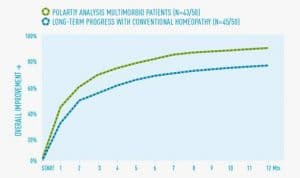
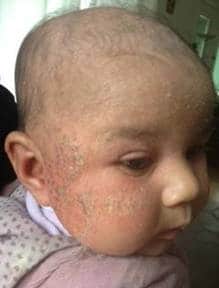

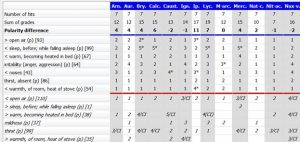
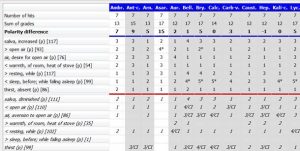
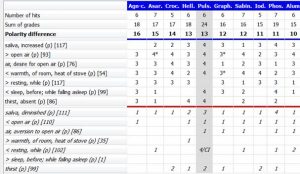
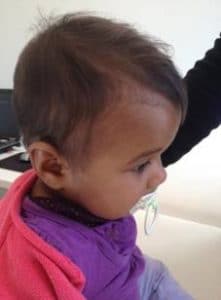

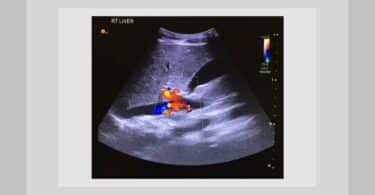
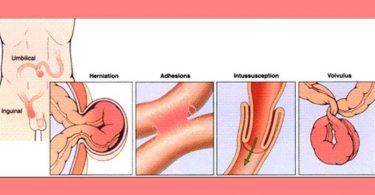
excellent sir.
want more skin cases as because we very often fail in skin cases.